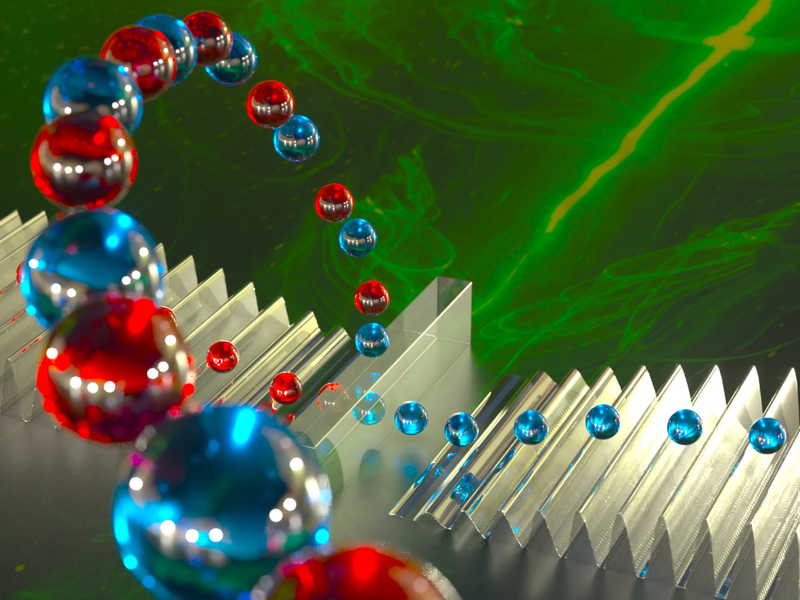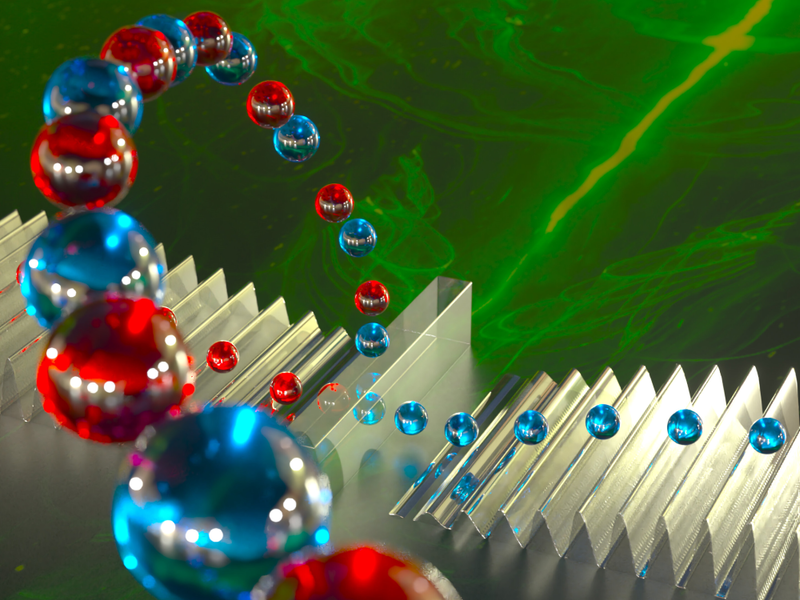Phonons on the Splitting Block
Most optics labs contain at least one beam splitter—a device that divides in two a stream of photons, the quantized particles of light. But these “quantum forks in the road” are missing for labs that study phonons, the quantized particles of sound. Now Andrew Cleland and his colleagues at the University of Chicago have filled this gap, demonstrating a phonon beam splitter [1]. The device could perform a role in future quantum computing setups that compute with phonons.
A photon beam splitter can be regarded as a mirror that reflects only a fraction of the time—typically 50%. Incoming photons can either bounce back or barrel forward. Those two options offer separate paths for the photons, which can be used to create interference between a single photon or generate entanglement between multiple photons.
The same splitting should be possible for all quantum objects, even phonons, which are made up of many atoms vibrating in unison. “The basic science question is whether phonons—that here represent the motion of around 1015 atoms—actually behave the way quantum mechanics says they should,” Cleland says.
Cleland and his team recently demonstrated several quantum effects with phonons (see Focus: Quantum Erasing with Phonons). This result required that they develop several phonon devices, including ones that can emit and detect single phonons. The next step in this development is a device for splitting phonons. A beam splitter is “really just a bad mirror,” Cleland says. He notes they aren’t that challenging to make. Rather, the challenge is in integrating the device with single phonon sources and detectors.
The researchers demonstrated phonon beam splitting using so-called surface acoustic waves (SAWs), which are phonons that travel on the top of a surface. They started with a 2-mm-long channel made of lithium niobate, over which phonons could travel in either direction. On both the left and right ends of the channel they installed superconducting qubits. Each qubit was rigged to a transducer—a combination that performs both single-phonon emission and detection.
In the channel’s middle, the researchers inserted their beam splitter, a comb-like structure made up of 16 thin metal bars, or “fingers.” Each finger reflects around 3% of the incident acoustic energy. When these reflections are in phase, this structure acts as a coherent mirror, reflecting 16 × 3% or approximately one half of the energy.
In a first test of the beam splitter, the researchers operated the system so that the left qubit emitted a single phonon. They found that after interacting with the beam splitter, the phonon had a roughly 50/50 chance of being reflected to the left qubit or transmitted to the right one. As per the rules of quantum mechanics, the two possibilities exist in a superposition of two states—left-moving phonon and right-moving phonon—that persists until a measurement is made.
The team also performed a classic interference test, in which both qubits simultaneously emitted phonons. Under this scenario, both phonons should exit the beam splitter in the same direction—either both to the left or both to the right. The data confirmed that such two-phonon interference occurred.
“I think it is wonderful work,” says Michael Tobar, a quantum technology researcher from the University of Western Australia. “It shows phonons act ‘just as quantum’ as photons.”
Cleland says that the beam splitter could be used in a logic gate where the split phonons would themselves perform as qubits. Researchers have built similar devices using photons—the motivation being to create an optical quantum computer (see Synopsis: Large Photonic Processor Solves Graph Problems). Although a fully phonon-based quantum computer is not envisioned anytime soon, the ease with which phonons interact with superconducting qubits suggests that phonons could play a role in a future hybrid quantum computer, Cleland says.
–Michael Schirber
Michael Schirber is a Corresponding Editor for Physics Magazine based in Lyon, France.
References
- H. Qiao et al., “Splitting phonons: Building a platform for linear mechanical quantum computing,” Science 380, 1030 (2023).





